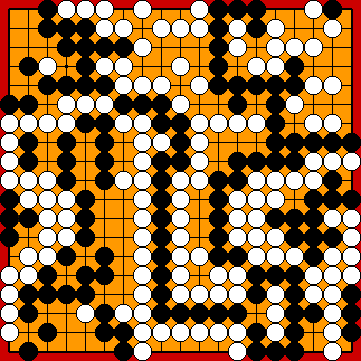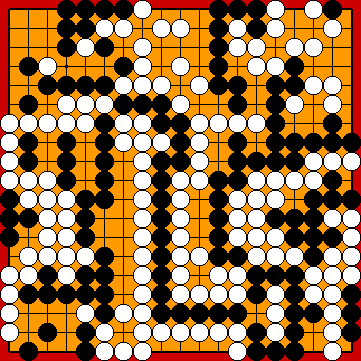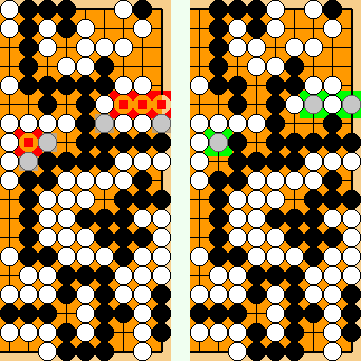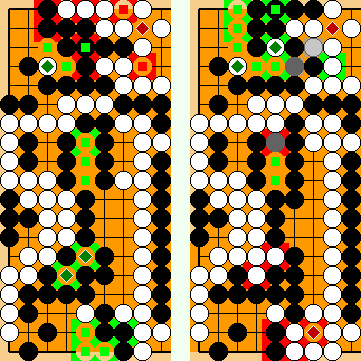New Story Line 2022
My Guzumi
|
KataGo's primary 2019 version played my Guzumi just before the start of the Crosscut Sequence in the left centre. We examine the chronological order of my discovery of the Guzumi as well as the additional support through Harry's later added Hasami-Tsuke Sequence. Finally, we try to answer the question why KataGo identified my Guzumi so late during its initial training. | |
|
Referenced by ( Let's enter the world of KataGo ... |
|
Please note that Harry Fearnley's Hasami-Tsuke Sequence ( |
|
Let's go back in time, and enter the world of amateurs ... |
|
Please note that at that time, the kikashi in the hanezeki were not yet played. |
|
However, we were very unsure about White options for a tenuki, because Black was ahead by only a very small margin at that time.
For further details, please refer to CHAPTER "Tenuki after the Guzumi (2022)" ( ... and / or the history of our investigations ... |
|
|
|
In the Guzumi Area there are now two false eyes This means that Black has not lost any Main Semeai Liberty because of my Guzumi. |
|
Liberties: Fujisawa Hideyuki (at left):
My Guzumi (at right):
No difference. |
|
Territory (in the Capture Variation): Fujisawa Hideyuki (at left):
My Guzumi (at right):
Black earned three points by my Guzumi. |
|
About two years later ... |
|
Please note that at that time, the kikashi in the hanezeki were not yet played. We thought that the Guzumi must be played latest now, just before the start of the Crosscut Sequence, but KataGo has proven us wrong. For further details, please refer to CHAPTER "Timing of the Guzumi (2022)" ( However, even KataGo's initial version of 2019 was wrong in its assessment of the latest moment until which the Guzumi could be delayed ... |
|
To our great relief, Harry's Hasami-Tsuke provided Black with an additional territorial advantage, which offered a sufficient safety buffer for our analysis of White's tenuki options after Black's Guzumi. |
|
Harry's Hasami-Tsuke Sequence created another White false eye This "own" approach-move liberty at the top allows Black to connect both hasami-tsuke stones ( |
|
|
|
|
|
Liberties: Fujisawa Hideyuki (at left):
Guzumi & Hasami-Tsuke (at right):
No difference. |
|
Territory (in the Capture Variation): Fujisawa Hideyuki (at left):
Guzumi & Hasami-Tsuke (at right):
In total, Black won seven points by combining Harry's Hasami-Tsuke and my Guzumi. |
|
Let's return to the era of KataGo ... |
|
Possible explanations: - Over a very long period of this training, KataGo came to the conclusion that Joachim's Ko-Semeai would end successfully for Black. This semeai is only possible in the absence of the Guzumi. For further details, please refer to section "Joachim's Hane at the Top (Joachim's Ko-Semeai #2)" ( - It can therefore be assumed that KataGo had already identified the new moves on the left side of the board that were advantageous for White. In this case, the Guzumi Exchange only resulted in a one-point advantage for Black, which was not enough to turn the game around. The latter will be explained below. |
|
///: With a manually suppressed Guzumi Exchange, KataGo reaches this position before the final mutual occupation of opponent's liberties in the Main Semeai. The diagram is taken from CHAPTER "Timing of the Guzumi (2022)" ( |
|
///: This is the comparable position that KataGo reaches with the Guzumi Exchange played. The diagram can be found in "The Solution" => "2021" ... |
|
Capture Variation (right half of the board): Without Guzumi Exchange (at left):
With Guzumi Exchange (at right):
White lost four points of territory in the right half of the board through the Guzumi. |
|
Capture Variation (left half of the board): Without Guzumi Exchange (at left):
In total, Black has a surplus of eleven points of territory. With Guzumi Exchange (at right):
In total, Black has a surplus of eight points of territory. White gained three points of territory in the left half of the board through the Guzumi. Taken together, Black gained (only!) one point by the Guzumi on the whole board. |
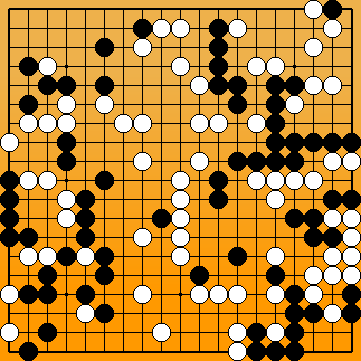
 2022MainLine
2022MainLine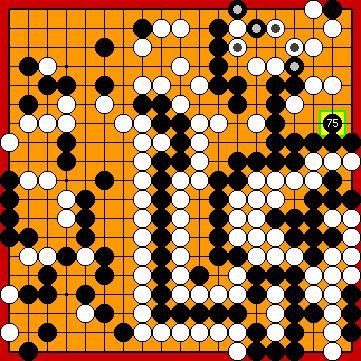
 : (
: ( 2022MainLine
2022MainLine ,
,  ) has been played already.
) has been played already.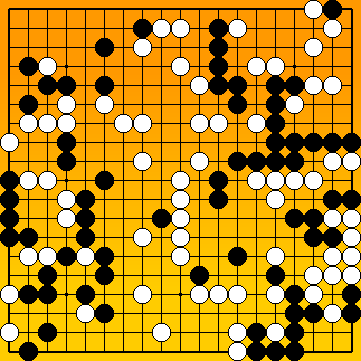
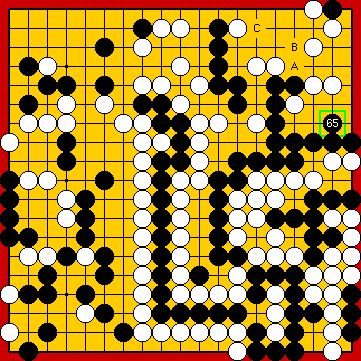
 :
: (after the previous exchange of
(after the previous exchange of  for
for  ) saw the light of day.
) saw the light of day.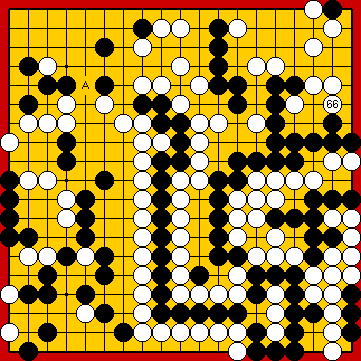
 :
: in particular worried us, which is also the strongest move for White in the top left corner, according to Yoon Young-Sun 8p, who kindly supported us on this issue.
in particular worried us, which is also the strongest move for White in the top left corner, according to Yoon Young-Sun 8p, who kindly supported us on this issue. 1439
1439 432
432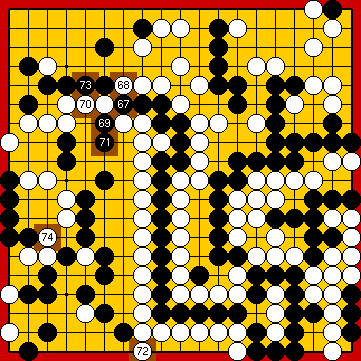
 :
: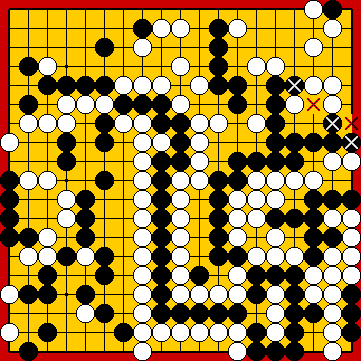
 for White, which is equivalent to one approach-move liberty for Black's large group in the upper right.
for White, which is equivalent to one approach-move liberty for Black's large group in the upper right.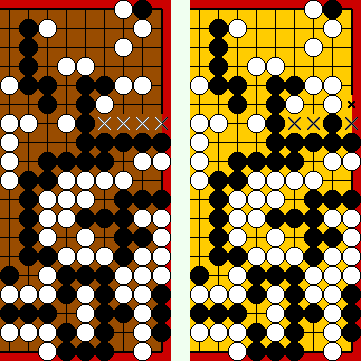
 in the Guzumi Area.
in the Guzumi Area. in the Guzumi Area = four liberties in total.
in the Guzumi Area = four liberties in total.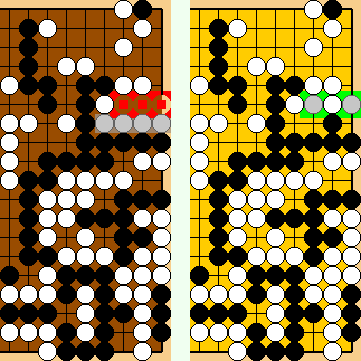
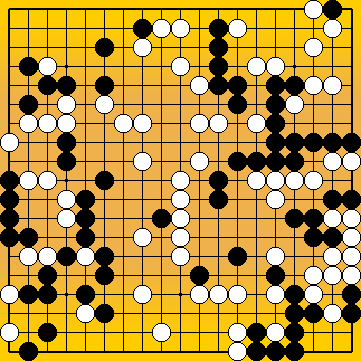
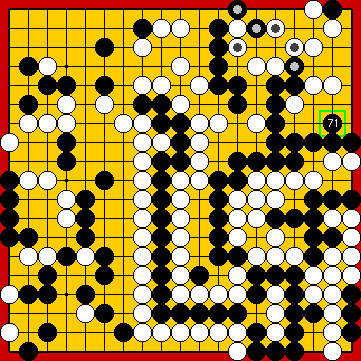
 :
: 1813
1813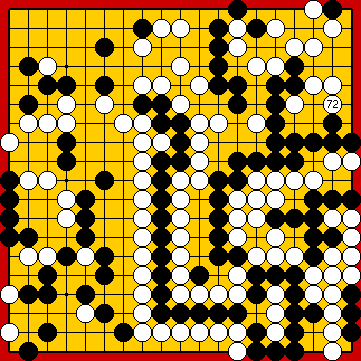
 :
: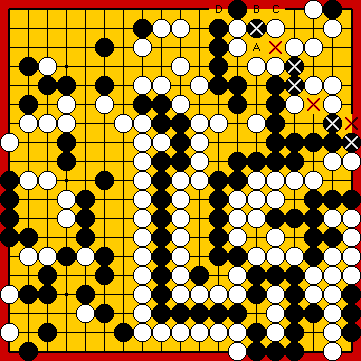
 ,
,  ,
,  ).
).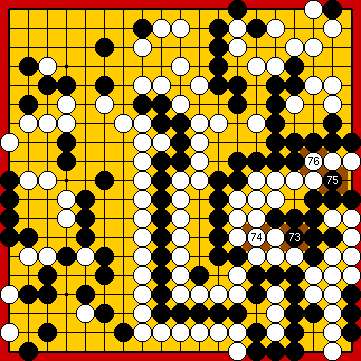
 ,
, 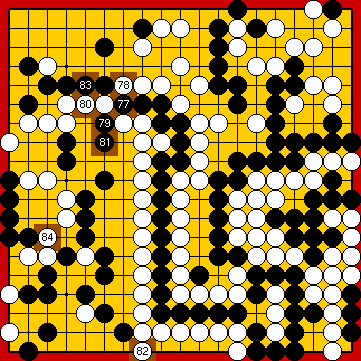
 :
: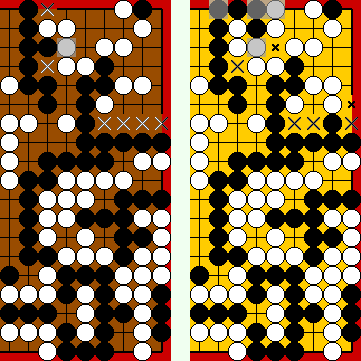
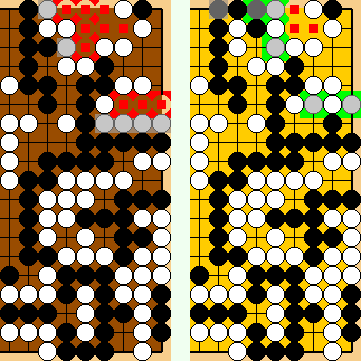

 2030
2030